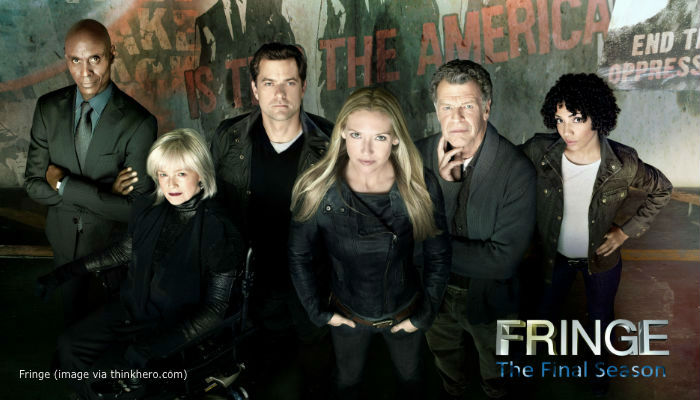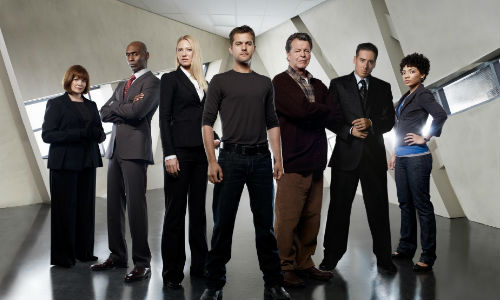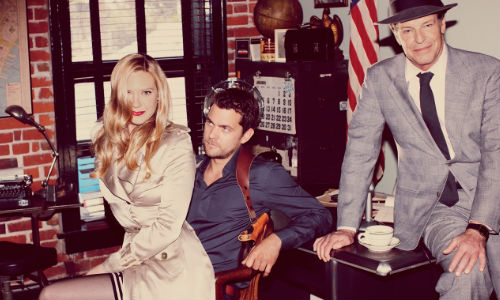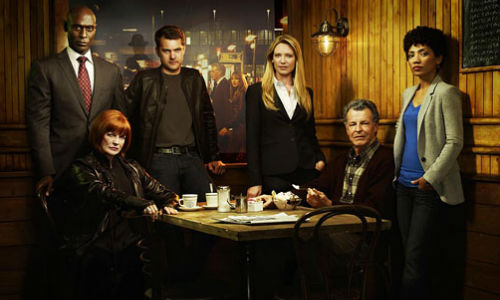
The end of Fringe in January this year with the almost perfectly-executed double episodes “Liberty” and “Enemy of the State” was, as it is for any series I have grown to love, a gut-wrenchingly sad moment for me.
Leavened somewhat by the almost flawless way that the show’s producers gave each character a fitting farewell, paid homage to the folklore of the show and wrapped up the magnificently complex Observers arc in an almost unnaturally satisfying way – you can read a brilliant recap of the series finale by the talented Morgan Jeffrey at digitalspy.com.au – it was still difficult to say goodbye to a show that was whippet smart, populated by exceptionally well drawn characters, and emotionally and narratively rich in a way so few series ever are.
A too-busy schedule got in the way of writing a fitting wrap up when the double-header aired but four months later, and with time to think about what I loved most about the show, I thought it high time I paid it tribute to the show.
And so here are the three things I appreciate most about Fringe, which while never a ratings darling, nonetheless stood head and shoulders above its contemporaries and illustrated just how you put together a superlative science fiction series.

Build a whole world, not just part of it
While Fringe did start slowly, and largely resembled a freak-of-the-week show in season 1, it still showed signs of possessing a remarkably strong sense of its own identity.
Like many shows which spend their freshman season figuring exactly what they are and what they want to say, Fringe didn’t emerge with this identity fully formed.
But there was enough of it in evidence in the pilot episode where FBI agent, Olivia Dunham (Anna Torv), discovers something weird afoot when a crashed plane full of people with translucent skin is found, leading her, in short order, to brilliant but institutionalised scientist Walter Bishop (John Noble), his son Peter (Joshua Jackson) and the enigmatic, manipulative corporate power player Nina Sharp (Blair Brown), to indicate that there was more to what would become known as a “fringe incident” that met the eye.

Over five intricately-constructed seasons where Fringe moved beyond its episodic roots to embrace a far more complex arc which ultimately resulted in the Observers-ruled nightmarishworld of season 5, where mankind is enslaved by future beings incapable of emotion, Fringe brought forth a world where the unexpected, the unusual, and the downright bizarre formed a perfectly-realised universe all of their own, right under the noses of the everyday world we know.
While it retained the power to shock those new to it, such as Agent Lincoln Lee (Seth Gabel), who arrived in season 2, for those who spent their entire working, and let’s face it personal, lives in it – life as a Fringe agent didn’t allow anyone the chance to enjoy anything close to a work/life balance – it was a fully-formed world that made absolute sense when you were in it.
And that allowed for imaginative, consistent storytelling week after week.
We are family
While it took Olivia some time before the oddly-erratic but lovable Walter Bishop, possessed of a formidable intelligence underneath the quirks and the penchant for strangely-matched at all times of the day and night, and the emotionally-guarded but insightful Peter became more than just unorthodox work companions, they bonded almost immediately.

For reasons that became apparent later on as the full extent of Walter’s meddling in the lives of both Peter and Olivia were revealed, along with the messy, hard-to-remediate consequences that resulted from his misguided attempts to play god, the three felt a sense of kinship that only grew as the show went on.
Over time Astrid (Jasika Nicole), who ended up being called any number of names, and even non-names beginning with “A” in one of the show’s running jokes – yes even a show as serious as Fringe proved itself capable of humour – and even the once-combative Nina, and Olivia’s boss Phillip Broyles (Lance Reddick) became a part of this extended family with bonds so fierce, and emotionally-resonant, that not even the Observers, or death, could pull them apart.
Deeper than deep
It was these self-same deeply-entrenched emotional attachments that lent the characters so much of their compelling humanity.
Throughout its run, Fringe refused to just tell a story that got us from A to B with detours via a bizarrely-twisted Y, and nightmarishly-warped Z, with only minimal nods to the emotional impact on the characters that moved the narrative forward.

On the contrary, it always eschewed superficial action-oriented storytelling in favour of stories that accurately and fully reflected how the characters we grew to know and love deeply would authentically react in that situation, and how they would be affected by often traumatic events.
These all too real emotional ramifications, borne of their close bonds, and willingness to bare their souls when necessary to each other, never weighed down the narrative, seamless woven in as they were to the storyline, adding rich, meaningful layers to each episode and lending Fringe a three-dimensional quality missing from shows that regarded their characters as little more than props to advance the storyline.
Fully realised in every way
This willingness to craft wholly complete, fully-realised stories was a hallmark of Fringe.
And it’s what drew me back episode after episode, season after season.

It was the sense that the producers and writers of Fringe cared enough to think through what kind of world they wanted to portray, the sort of people they want to populate it with, and the stories they want to tell, and then put the considerable effort into making this a reality, that made the show so compelling to watch.
This wasn’t a show done by half-measures.
It was a labour of love, fully-formed, richly-detailed, and thus satisfying on almost every level, and that is why the end of the show, when it came, was felt so deeply.
It was, and is, the very epitome of what good quality storytelling should be, and even in the current golden age of television, it remains a very rare thing indeed.